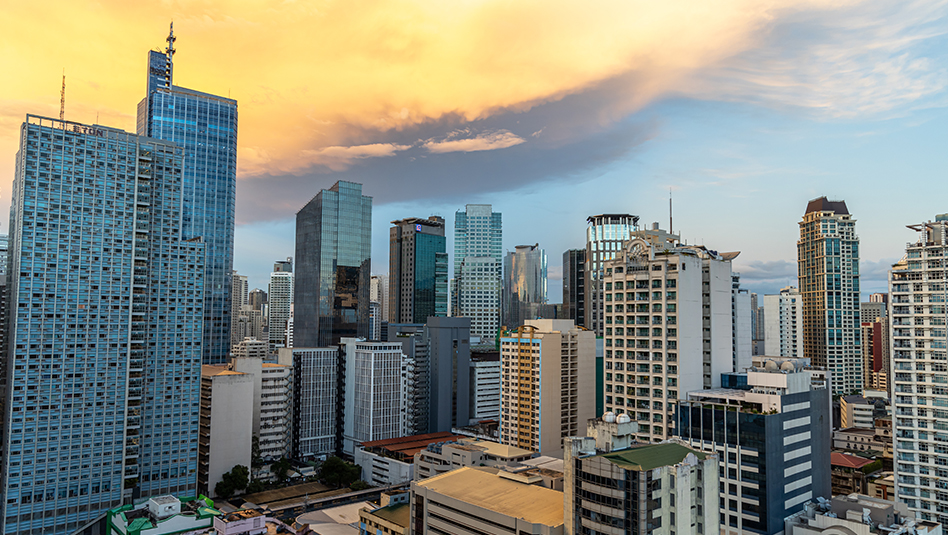




Policy rate views: Fed expected to do baby steps
 DOWNLOAD
DOWNLOAD

Inflation Update: Faster but full-year average within target
 DOWNLOAD
DOWNLOAD

Monthly Economic Update: Waiting on Jay Powell
 DOWNLOAD
DOWNLOAD


July trade gap widest in 16 months

The Philippines in July posted its widest trade deficit since March 2023 as imports grew at their fastest clip in three months, outpacing the uptick in exports, the Philippine Statistics Authority (PSA) reported on Tuesday.
Preliminary data from the PSA showed that the country’s trade-in-goods balance — the difference between exports and imports — stood at a USD 4.87-billion deficit in July, 18.05% bigger than the USD 4.12-billion gap a year ago.
Month on month, the July trade gap also widened by 12.73% from the USD 4.32-billion deficit in June.
The July trade deficit was the widest monthly gap since USD 5.02 billion in March 2023.
Meanwhile, for the first seven months, the Philippines’ trade deficit narrowed by 5.78% to USD 29.91 billion from USD 31.75 billion a year ago.
The country’s balance of trade in goods has been in the red for 110 straight months (nine years) or since the USD 64.95-million surplus in May 2015.
In July, the value of imports increased by 7.2% year on year to USD 11.12 billion from USD 10.37 billion, which was the fastest rise since April’s 13%. This was also the highest import value since the USD 11.63 billion recorded in March 2023.
Month on month, imports jumped by 12.4%.
For the first seven months, imports declined by 1.04% annually to USD 72.57 billion.
Lower commodity prices in the global market made imports more attractive to local buyers, Rizal Commercial Banking Corp. Chief Economist Michael L. Ricafort said in a Viber message.
“The seasonal increase in importation activities in the third quarter, a consistent pattern seen for many years, could lead to a further pickup in imports,” he said, adding that the peso’s recent appreciation versus the dollar would make imports cheaper and exports more expensive.
After trading at the P58 level against the dollar and hitting 18-month lows in May due to uncertainty over the timing of interest rate cuts here and abroad, the peso has since recovered, closing at the P56 level at end-August and even returning to the P55 mark earlier this month.
Meanwhile, July exports inched up by 0.1% to USD 6.249 billion from USD 6.246 billion a year ago, marking the first annual growth since April’s 27.9%. Month on month, exports went up by 12.24%.
Year to date, exports have risen by an annual 2.59% to USD 42.66 billion.
Exports are unlikely to post “significant gains” for the rest of the year, Union Bank of the Philippines, Inc., Chief Economist Ruben Carlo O. Asuncion said in a Viber message.
“The sober export outlook in the second half of 2024 is against a backdrop of lackluster China growth and risk of slower prospects for developed markets that already prompted key central banks, led by the European Central Bank, Bank of England and Bank of Canada, to start dismantling their high interest rate structures to prioritize growth moving forward, likely to be followed by the US Federal Reserve,” Mr. Asuncion said.
The Development Budget Coordination Committee expects 5% and 2% growth in exports and imports, respectively, this year.
IMPORTS
In July, imports of raw materials and intermediate goods picked up by 13.31% to USD 4.22 billion, accounting for 38% of total imports for the month.
Imported capital goods rose by 9.52% to USD 3.29 billion making up 29.6% of the total. Imports of consumer goods increased by 3.11% to USD 2.13 billion for a 19% share.
By value, imports of electronic products were the highest at USD 2.53 billion in July, up by 11.84% from last year. They accounted for 22.8% of total imports.
These were followed by mineral fuels, lubricants and related materials at USD 1.44 billion (12.9%) and transport equipment at USD 1.03 billion (9.2%)
China was the biggest source of imports in July with a value of USD 3.08 billion, making up 27.7% of the total import bill.
It was followed by Indonesia with imports valued at USD 947.55 million (8.5%), Japan with USD 893.54 million (8%), South Korea with USD 810.32 million (7.3%) and the United States with USD 675.58 million (6.1%).
EXPORTS
Meanwhile, among major types of goods, exports of manufactured goods went down by 3.1% year on year to USD 4.98 billion in July, but still made up the bulk or 79.6% of the total.
On the other hand, exports of mineral products rose by 11.4% to USD 583.6 million.
By commodity group, exports of electronic goods dropped by 11.9% to USD 3.25 billion from USD 3.69 billion a year ago. Still, electronic products were the country’s top export in terms of value, accounting for 52.1% of the total.
Among electronic products, semiconductor exports dropped by 22.63% to USD 2.37 billion.
Electronic goods remained the Philippines’ top export amid the positive outlook for artificial intelligence and technology sector, Mr. Asuncion said.
“We have yet to see how demand for electronics will recover in the next coming months. The tech sector in the region and in other advanced countries would still need to do better,” he added.
Overall, the United States remained the top destination for Philippine-made goods in July, with exports valued at USD 1.06 million, making up 16.9% of the total for the month.
Japan was the second-biggest market for Philippine exports with a value of USD 872.43 million (14% share), followed by China with USD 791.29 million (12.7%), Hong Kong with USD 744.82 million (11.9%) and South Korea with USD 305.17 million (4.9%).
Other top export destinations for the month were Taiwan, Germany, Thailand, and the Netherlands. – Beatriz Marie D. Cruz, Reporter
This article originally appeared on bworldonline.com





 By BusinessWorld
By BusinessWorld
